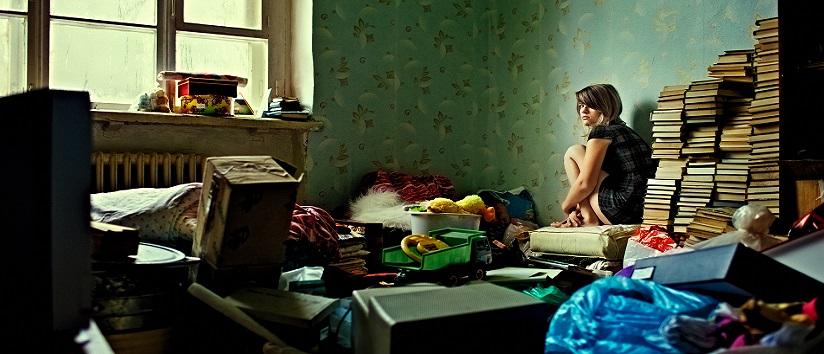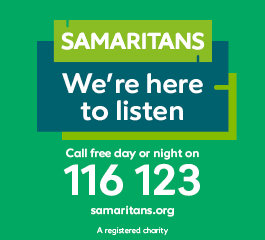Dumping gawking TV voyeurism: How to properly support people with a hoarding disorder
07 July 2021
Portrayals of hoarding in popular culture are directed through a thinly veiled narrative of pity while inviting us as an audience to stare and dissect someone else’s interior lives. These shows rarely help the people who are involved but are primarily made for our voyeuristic pleasure. Kayley Hyman, Holistic Hoarding, explains how we can move on from those images and begin to support people to live with the condition safely.
Over recent years, we seem to have developed an even more heightened fascination with the interior of peoples’ homes. With a whole array of programmes to tantalise the voyeur in us, we are cajoled from the offset with promises of filth and chaos.
As the producer of the television show Hoarders points out, "People want to see the gross stuff". And on this problematic premise, the media engages some of the most vulnerable members of our society to have a production team inside their homes as we embark on a tour around their property, leaving no stone left unturned.
- See also: 'Developing a self-help group for people with hoarding disorder and their carers'
- See also: 'Hoarding: how and when should you take down people's 'walls of safety'?'
The interior lives of people with a hoarding disorder
Television has undeniably done a great deal for promoting visibility in mental health. Still, its portrayal of hoarding disorder seems to have evaded a valuable opportunity to help de-mystify the condition. Hoarding is a wonderfully multifarious mix of neurology, psychology, biology and personal experiences. Yet, rather than use their wide-reaching platform to illuminate this range of factors that could lead to hoarding, many programmes sensationalise the causes behind it, encouraging the individual to re-live their trauma on camera - usually in a state of extreme distress – speaking of loss, grief, neglect and abuse.
The formulaic process involves provoking reactions from the person by throwing out their items, often without consent, into the ubiquitous skip outside the house. By the end of the hour, we are invariably presented with a miraculous before and after shot of a home that is no longer recognisable to its occupant thanks to a large budget, teams of professionals, and a deadline to meet. However, demonstratively 4 out of 5 people who participated in one of these shows return to their hoarding ways.
Not having any other point of reference – of alternative media portrayals of what it really means to hoard or of actual support provision - it is these programmes to which people refer to when we start support. It is the reason why I have to explicitly explain that I will never touch someone's items without express permission, why I need to reiterate that I will never walk around the rooms in their home uninvited. And why one lady recently told me that she had been awake since 2 am the morning of my planned visit, as she thought I might make her throw out her collection of china plates.
The legacy that’s been left not just by the media but by mental health provision as a whole when it comes to hoarding has typically been one of disempowerment and uncertainty. Hoarding has traditionally fallen on housing to deal with as a tenancy governance issue, meaning that the housing arena often has to resort to enforcement processes by default as they have a duty of care to ensure that tenants and their extended communities are safe.
The tenancy officers who attend the Trauma-Informed Approaches to Hoarding training sessions that Holistic Hoarding runs often speak of their own sense of powerlessness when they have to put interventions in place such as the Clean and Clear, watching as their tenants become increasingly distressed by the process taking place in what should be the ultimate safe space. They talk of hitting a brick wall and wanting to do more but not knowing what that could look like. Often, they are told that it’s simply not their remit to go beyond what needs to be done – which is getting the property cleared out and essentially ensuring that the organisation cannot be held liable should there be a safeguarding issue or fire as a result of hoarding. They have done what they can.
This is a valid point for the housing arena to make –it seems particularly unjust that an issue as multi-faceted as hoarding appears to have fallen exclusively to housing professionals to deal with. And it would be so easy to reiterate this mantra and to leave it there.
But for some local authorities, the ownership is being taken. The desire to help is a meaningful one, not merely a box-ticking exercise.
When Caerphilly’s Supporting People Team commissioned Holistic Hoarding to deliver a year-long pilot project to support tenants who were at risk of eviction due to hoarding tendencies, they openly said the issue of hoarding within the Borough had become too considerable to overlook. And they were prepared to invest in a model that moved away from the “Before and After” image that we’ve had hardwired into the fabric of our services that we feel we need to see to indicate that we’ve achieved a positive outcome in someone’s home.
The Commissioner advised that the team wanted the support to be person-led, not time-led, a considerable shift away from the more typical culture of support being delivered in tight blocks of 12 unfeasible weeks. They spoke of recovery, of relapse prevention, of hope and positivity. They provided funding for skips, fully recognising that people may not ever be ready for this, but also wanting the resource to be available just in case.
The commissioning team endorsed fluid support, where the outcomes became personalised goals that have so far ranged from someone reclaiming space to rediscover their love for painting to creating more space for grandchildren to visit again. This kind of dedicated and meaningful backing has allowed us to freely acknowledge what hasn’t worked in the past when it comes to hoarding and opens the opportunity to look at what might work.
During the project development stage, I reached out to a Hoarding / Cluttering support group I had joined on social media a few years previously. I put to the 18,000 members what we envisaged the model looking like, asking for their expertise to help shape it. They educated me in language and in the benefits of a gentle way of working, and their words of support and encouragement reaffirmed that we were on the right track with our model.
How can we keep people safe?
The support looks different for each individual – for many, we take our time with telephone or digital support, building up to my presence in their home. Others have warily but warmly welcomed me into their homes, letting me into their sanctuaries and telling me their stories. I have been fortunate to see some of the most wonderful treasures, often with tales behind them of life and love, building up a picture with someone of how the home has evolved in this way - and what an alternative blueprint could look like.
For many people, the problem is not the ‘stuff’ itself. It’s the repercussions of the stuff – letters that reference eviction, families that have stopped visiting, or the stigma that surrounds the very term “hoarder”. Many people I work with actively reject this term, preferring the term collector instead. It may also be the case that the individual does not recognise that the property is hoarded due to a very common lack of insight within this population. What we can do here is bring the harm-reduction model into play, a strategy that Caerphilly’s
Supporting People Team very much advocated for. Much like with its application in addiction services, this model works on the premise that we don’t need to stop all hoarding behaviour.
Instead, we can support the creation of an environment that is simply "good enough", where the person has access to at least one bathroom, somewhere safe to sleep, and the risk of fire and eviction have been minimised. It can also appeal to those who have previously been reluctant to engage in treatment as they anticipate being told to get rid of everything – this alternative process of 'rearranging' to promote safety can seem far less intimidating.
It can also be helpful to draw on a motivational interviewing approach and ask someone what the positives are to them hoarding. Because we already know the many negative ramifications of hoarding – the risk of fires and eviction, the sense of shame and isolation. But there are also some genuine positives, and we need to hear about these so that we can understand the safety that a hoard can offer, the comfort and familiarity it provides to someone who may not have these elements in any other area of their life - hoarding can provide a physical structure of protection. To forcefully deconstruct that space is likely to cause significant damage. So we need to find new ways of creating alternative architecture to promote healing and allow people to practice new behaviour.
Funding is undoubtedly a crucial part of health and social support provision. But more than that, it’s about a local authority taking genuine ownership of an issue that could so easily be diverted elsewhere and ignored. It’s about commissioners giving support providers autonomy to develop services that support the evidence base and are also shaped by individual and personal stories of what it means to hoard. During the pandemic, requests for mental health support have gone up exponentially. If the clinical provision for hoarding was scarce before, it’s worrying to anticipate what it will look like now.
So maybe this complex health condition has slipped through the gaps and landed in the housing arena. But with the proper infrastructure, support, and tenacious backing from a local authority, maybe housing has got this one.


Comments
Write a Comment
Comment Submitted